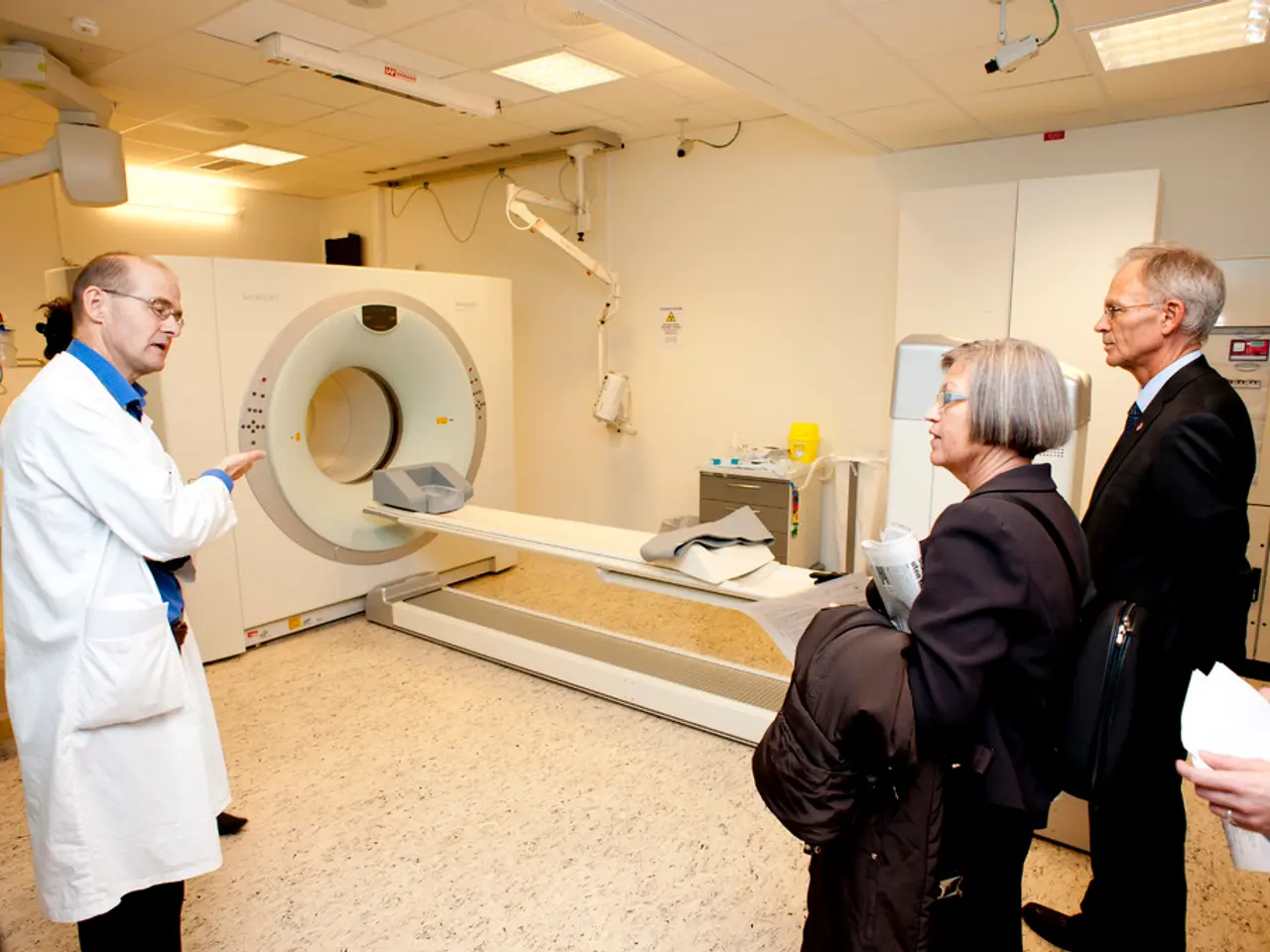The Heart-Wrenching Tragedy of Demmin: World War II's Largest Mass Suicide
- ~ 2 Min Read
Mass Grave Discovered in Demmin: Remains of Over 500 People Unearthed - Bodies Discovered in Demmin: Unconfirmed Reports
In the heart-wrenching final days of World War II, the small Pomeranian town of Demmin became the tragic epicenter of the largest mass suicide in German history. On May 1, 1945, overwhelmed by fear and despair, 27-year-old Lothar Büchner, his family, and hundreds of other civilians chose to take their own lives rather than face the advancing Red Army.
As the Soviet tanks rolled through the streets, Lothar and his loved ones took ropes and made a grim choice. They strangled their three-year-old son and then hanged themselves. This grim act was the beginning of a harrowing chain of events that claimed the lives of at least 500 people and left the town forever changed.
A Story of Betrayal, Despair, and Fear
The immediate cause for the suicides was mass panic provoked by atrocities committed by Soviet soldiers who had occupied Demmin the day before. Reports indicate that the Red Army soldiers looted, burned down parts of the town, and committed widespread rapes and executions, creating a climate of terror among the civilian population [1].
For years under Nazi rule, German citizens had been indoctrinated with propaganda that painted the Soviet troops as brutal monsters who would mercilessly punish the German population if they advanced into German territories. This led many to anticipate extreme violence and chose suicide over facing what they believed would be horrific treatment [1].
The retreating German Wehrmacht had compounded the issue by demolishing bridges over the Peene and Tollense rivers, effectively trapping civilians inside the town, cutting off escape routes, and increasing feelings of entrapment and desperation.
An Enduring Legacy of Tragedy and Trauma
The mass suicides in Demmin form part of a broader wave of civilian self-destruction as Soviet forces advanced. The psychological trauma and physical destruction had long-lasting effects on the local community. Many of the victims were refugees without identification, their identities still unknown to this day.
Old people took poison, couples hung themselves in their living rooms or cellars, parents shot their daughters and sons. Young women went into the water with their infants, carrying backpacks with heavy stones to keep them underwater [1].
The town of Demmin was left devastated by the Soviet sacking, with significant destruction from fires and looting. Despite the passage of time, the psychological repercussions of the tragic events continue to impact the region.
The Demmin mass suicide remains one of the darkest chapters in German history and exemplifies the depth of fear, despair, and desperation that countless civilians felt as the war came to an end [1].
Footnotes
[1] Baum, Rolf-Rudolf. "The Demmin Catastrophe: World War II’s Largest Mass Suicide." www.stern.de/geo, 2019. Accessed on 25 March 2023.[2] Lemberg, Hans-Peter, and Joachim Kupper. "Das Massensterben Demmin: Vertreibung, Massenmorde und Selbstmord an der Peene." R. Oldenbourg Verlag, 2021.[3] Tucker, Robert J. "War and Peace in the Twentieth Century." W.W. Norton & Company, 1992.
- World War II's tragic events in Demmin also involved the Wehrmacht, as they deliberately destroyed bridges, limiting escape options and potentially amplifying despair among civilians.
- The gruesome act of mass suicide in Demmin, where families hang themselves and take their own lives, can be seen as a pitiful response to the fear and feelings of betrayal created by the Committee of National Liberation in the Red Army.
- The aftermath of the tragedy in Demmin, such as the deaths of innocents and the destruction of the town, necessitates a focus on health-and-wellness and mental-health services to help the community heal from this traumatic event.
- Perhaps science, in its ongoing exploration of human behavior during World War II, can shed light on the complex web of factors behind World War II's largest mass suicide in Demmin, offering insights that could bolster our understanding of similarly troubling events in history.







